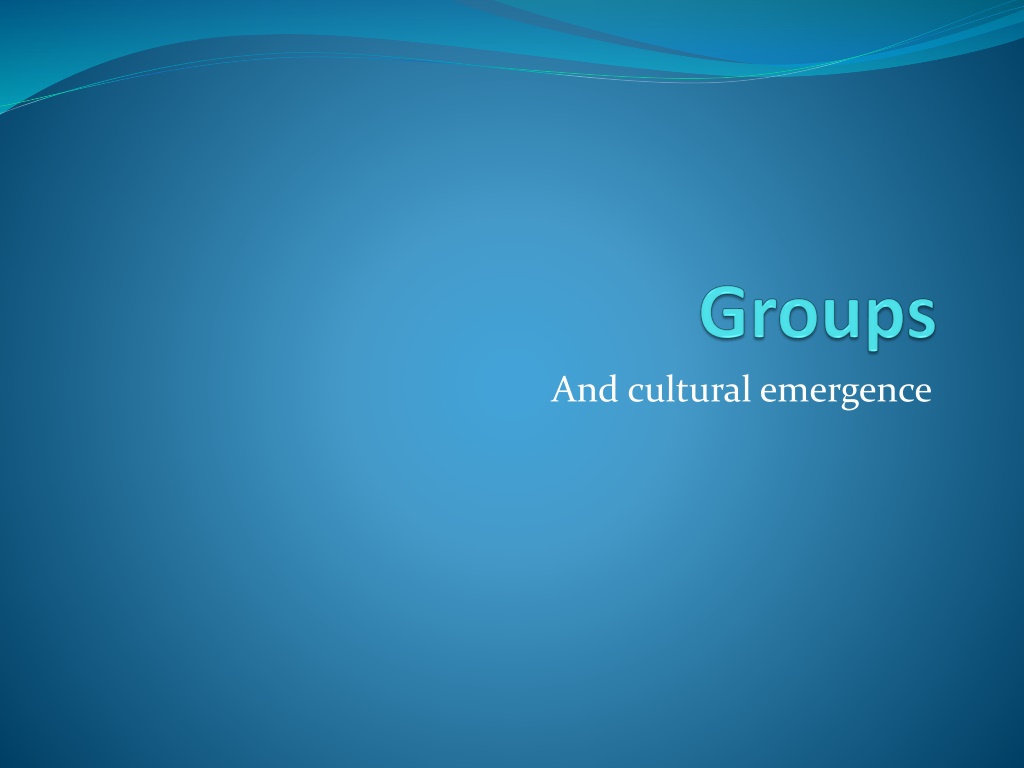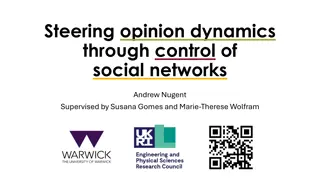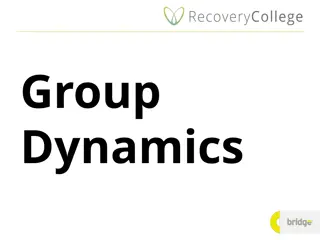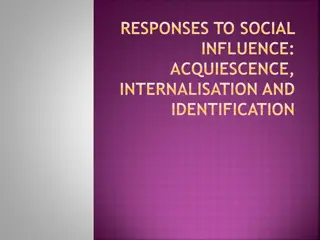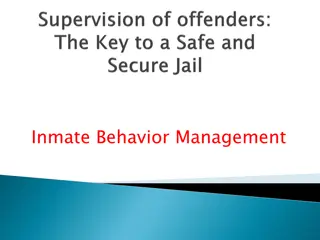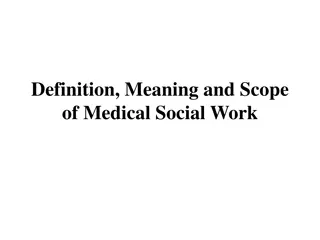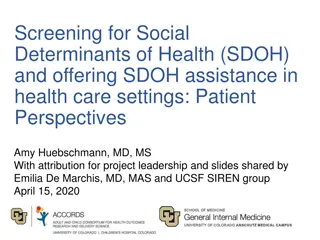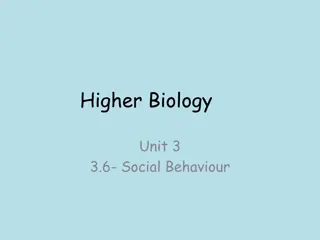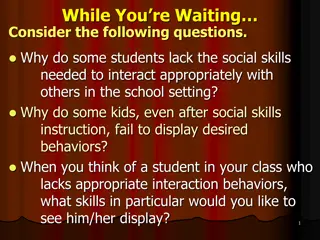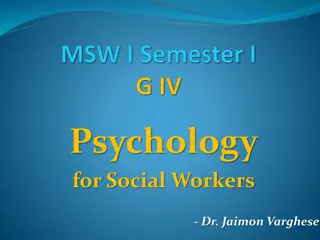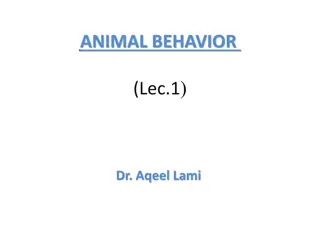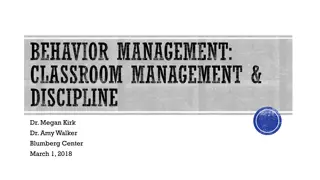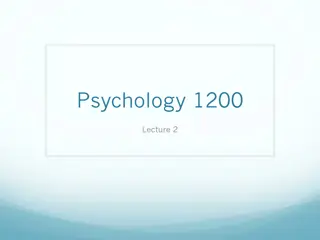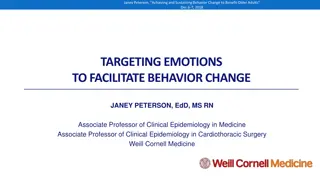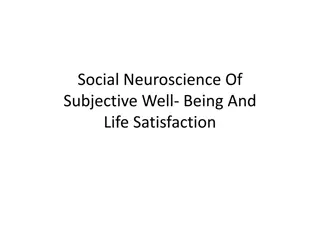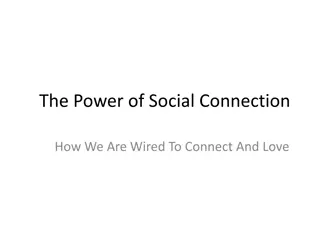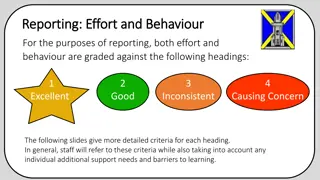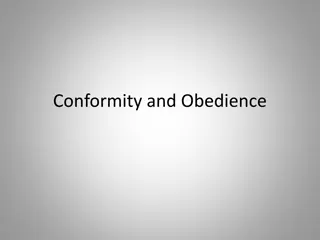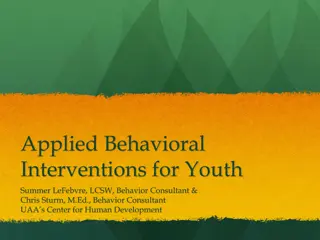Group Dynamics and Behavior in Social Settings
Explore the concepts of group formation, group tasks, social influence, and the pitfalls of group behavior such as social loafing and groupthink. Learn about the impact of group dynamics on decision-making and individual behavior within a collective context.
Uploaded on Oct 09, 2024 | 0 Views
Download Presentation

Please find below an Image/Link to download the presentation.
The content on the website is provided AS IS for your information and personal use only. It may not be sold, licensed, or shared on other websites without obtaining consent from the author.If you encounter any issues during the download, it is possible that the publisher has removed the file from their server.
You are allowed to download the files provided on this website for personal or commercial use, subject to the condition that they are used lawfully. All files are the property of their respective owners.
The content on the website is provided AS IS for your information and personal use only. It may not be sold, licensed, or shared on other websites without obtaining consent from the author.
E N D
Presentation Transcript
What is a group? What is a group? Size? Purpose? Time? Number of members? Frequency? What makes a group, groupier? (entitativity) What do groups do for us? Who joins groups? What did you learn or wonder about groups when reading the chapter?
Group formation (Tuckman, 1965) Suriya, T. (2015). Blog post. http://thiyagusuriyagroupdynamic.blogspot.com/2015/10/group.html
Stiner (1972) typology of tasks Additive Criterion Divisible Complementary /Maximizing Disjunctive Averaging Judgmental Unitary Intellective /Optimizing /Compensatory Conjunctive
Social facilitation vs. social loafing Social facilitation Triplett, 1898 Zajonc s 1965 cockroaches Difficulty as a moderator Social loafing Ringelmann, 1876 Latan , Williams, and Harkins, 1979 Coordination losses vs. motivation losses How can you reduce social loafing?
When are groups bad? Brainstorming (Osborn, 1953) Deindividuation (Diener et al., 1980) Group polarization (Stoner, 1968) Hidden profiles (Stasser et al., 1989) Why are they bad? Coordination loss Evaluation apprehension Social influence Diffusion of responsibility
Groupthink (Janis, 1952) strong group cohesion insulation from outside infl homogeneity of attitudes a directive leader high stress poor decision-making proced low situational member SE illusion of invulnerability belief in the moral correctness of group stereotyped views of out-group self-censorship direct pressure on dissenters to conform illusion of unanimity mindguards incomplete survey of alts failure to examine risks of the favored alternative poor info search failure to develop contingency plan biased assessment of risks, costs, benefits, and moral implications failure to reconsider later
Barons (2005) ubiquity approach Only antecedents are: Sense of social identity Salient norms Low situational self-efficacy Symptoms: Conformity Suppress dissent Pluralistic ignorance Ingroup favoritism Group polarization Hidden profile effect Examples?
How can we make groups better? When are they better than individuals? How can we improve them? How does diversity affect groups? How can we improve the effects of diversity?
Kohler effect (Kerr) Social compensation What increases its likelihood?
Application Two companies merging deciding on new processes Putting people into ethnically diverse groups to decide how to handle diversity issues at a university Having students work on a class project in small groups
Social identity theory review (Tajfel & Turner, 1978) What does this theory predict? Psychological processes Social identification Social categorization Social comparison Group distinctiveness Minimal groups paradigm How can people deal with devalued identity? Age of the Sage (n.d.) https://www.age-of-the- sage.org/psychology/social/social_identity_theory.htm
Source model of group threat (Greenaway & Cruwys, 2019) How does this theory build on social identity theory? What determines whether we see a group as our ingroup? What does intergroup threat lead to? What does intragroup threat lead to? What may moderate this effect? What other comments/questions did you have on this article?
Cultural evolution What is culture? Approaches: Evolutionary Ecological Examples? Clustering Correlation DSIT Continuing Diversity Consolidation
Information spread What affects what information spreads most readily? What happens to information as it spreads? (e.g., Bartlett, Kashima, DiFonzo)
Critiques and comparisons How are these three approaches similar and different? What are some critiques of each? How can we test theories of cultural evolution? What are some issues in testing/interpreting cultural data over time? What critiques did you have of the article itself? Evol Eco Dyn Sys Sims Diffs Who What
How would each approach explain Increasing appeal of more authoritarian leaders across the world Decreasing gender inequality Increasing individualism across the world Decreasing social capital Increasing openness to experience The proliferation of Starbucks and Targets Jan 6 What will happen post-COVID
Next week--relationships Franklin & Zebrowitz--physical attraction Brannan & Mohr love, friendship, social support Fraley attachment (read before Arriaga) Tan & Tay relationships and wellbeing Arriaga et al. (make sure to understand and be able to explain and critique ASEM this one will take the most time) Walter et al.
